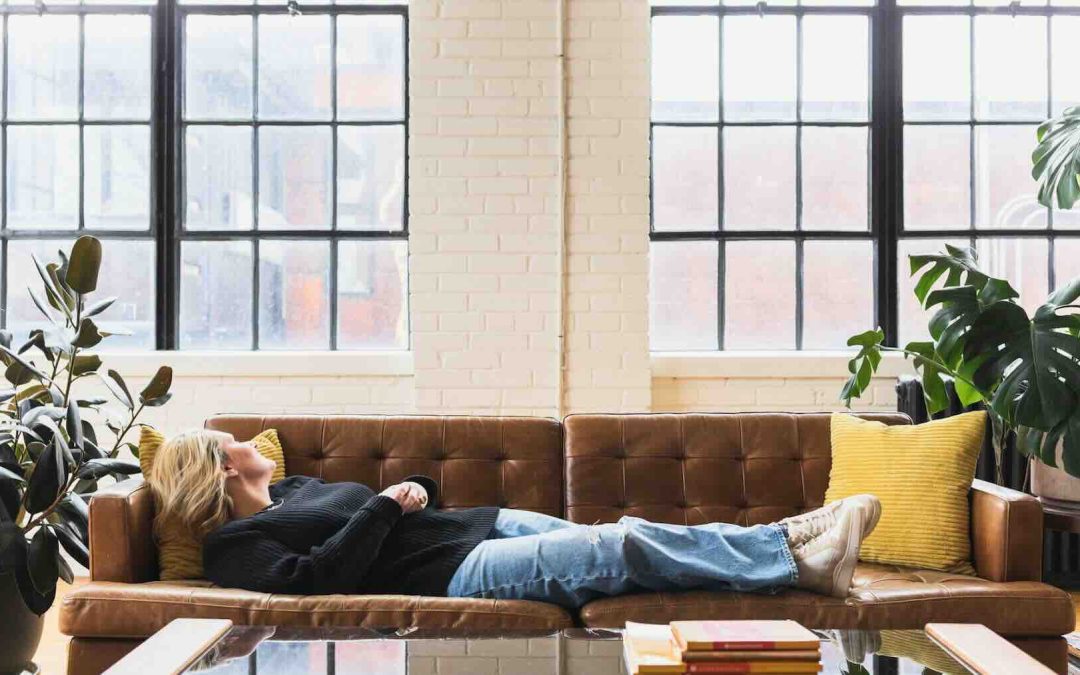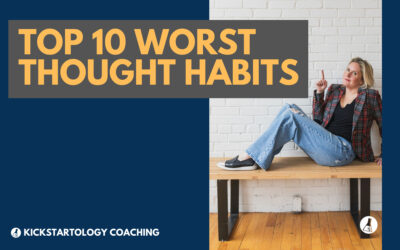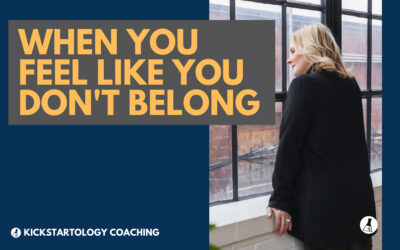Why Avoiding Discomfort Feels Safe but Keeps You Stuck
Don’t have time? The brief:
- Playing it safe usually doesn’t look like fear. It looks like reasonable choices that slowly shrink your life.
- Avoidance rarely feels dramatic. It feels like relief, timing, or being smart about risk.
- Most people don’t notice what they’re building around. Until it starts to feel too small to live in.
The full piece goes deeper and makes the vague part clearer.
The Real Danger
Fear gets blamed for a lot: the business you haven’t started, the book you haven’t written, the version of you that never walks into the room like you belong there. People treat it like an outside force, but fear is internal. It’s wired into your system to keep you small enough to stay safe.
That’s what makes it dangerous. Your brain doesn’t care if you’re fulfilled. It only cares that you survive. So emotional discomfort gets flagged as a threat. Rejection won’t kill you, but your system still reacts like it might, since it can’t tell the difference between a predator and a performance review.
Which is why fear doesn’t stop you because it’s powerful. It stops you because it’s persuasive. It convinces you that hesitation is wisdom. It tells you to wait until you’re ready, and when you wait, it rewards you with relief. That’s the trap. Most people call this “being realistic,” but it’s just redefined avoidance.
How Avoiding Discomfort Changes Who You Think You Are
Fear is not the problem. Avoidance is.
Avoidance doesn’t just keep you from taking risks. It reshapes who you believe yourself to be, gradually and quietly. You don’t wake up and declare yourself small. You just make one cautious choice after another until your life reflects that. You start building around the edges of fear without realizing it. Ambition gets trimmed. Desire gets edited. You keep choosing what won’t hurt you, instead of what might change you.
Eventually, you don’t have to avoid fear because you’ve stopped putting yourself anywhere it might show up. That’s how fear shapes identity.
Fear stops you from becoming someone you don’t yet recognize. That’s what makes it feel so destabilizing. It’s not just about discomfort, it’s the disorientation of stepping into a version of yourself that hasn’t been tested yet. Like putting on clothes that technically fit, but feel wrong because they aren’t your usual style.
The real cost isn’t just what you didn’t do. It’s who you didn’t let yourself become because comfort kept calling the shots. That’s what being stuck in life can look like.
No one feels ready. That’s the myth. People wait, like maybe confidence will suddenly click in. Like maybe one day they’ll wake up and pitching themselves or quitting the job won’t feel like a risk. They want proof it will work and that they won’t regret it. But readiness only shows up after you’ve done the thing while still feeling unsure.
Courage doesn’t feel like a surge of power. It usually feels like hesitation you didn’t give in to, or a conversation you thought about avoiding, but had anyway. It feels like moving forward with no guarantee of who you’ll be once it’s done.
The thing is: you don’t need to feel less afraid. You need to stop treating fear like it means something is wrong.
Let it be there. Let it squeeze your chest, speed up your heart, trigger the impulse to disappear, and know you don’t have to argue with it. You just need to stop following its lead. Because the more you resist fear, the more control it takes. The more you let it exist without reacting to it, the less influence it has over what you do next.
What Avoiding Discomfort Actually Looks Like
Here’s what that can look like in real life. Not in theory or some coaching cliché. But in the day-to-day choices that keep you from becoming someone unfamiliar:
- Not applying for the job you want because you’re so used to complaining about the one you have that it’s dangerously close to becoming your personality.
- Staying in the relationship because splitting expenses feels safer than splitting your life open.
- Overcommitting at work so you never have to be alone with your own wants for more than ten minutes.
- Getting promoted in a career you never chose, just because you were too polite to quit five years ago.
- Dating people you know you won’t fall for, just to avoid the risk of actually caring.
- Constantly upgrading your healthy habits like that’s the same thing as changing your life.
- Outsourcing your decisions to coaches, algorithms, or other people’s reactions.
- Refusing to want anything too specific, in case not getting it feels like failure.
- Building a life so reasonable no one ever questions it, including you.
- Avoiding the hard conversation for so long that silence becomes the relationship.
- Living just under the threshold of dissatisfaction that would force you to do something.
- Keeping everything in your life technically functional so no one, including you, has to ask if it’s actually working.
None of it breaks you. It just dulls you, one decision at a time.
If Fear’s Going to Be There Anyway, Make It Count
The question isn’t how to be less afraid. It’s whether you’re done protecting the status quo. The pain of fear passes, but the cost of avoiding it doesn’t. It adds up slowly, until you forget what it’s like to want something without editing yourself for safety.
If fear’s going to be there either way, you might as well end up with something real to show for it. Otherwise, you’re just scared and stuck. And that’s not a life. That’s a loop.
P.S. If you want some help figuring out the next part, book a free coaching exploration call. We’ll talk about what’s going on and whether group coaching or 1-on-1 coaching fits. No pressure. Just clarity.
Not ready to talk?
Start with my FREE mini starter course:
KICKSTART: THE FIRST STEP
Make the decision that changes everything else.
Clarity, commitment, and forward motion. Ten minutes a day. Starting now.
How to Stop Worrying About Everything
Worrying Feels Useful. It isn’t. People say they “can’t stop worrying,” but that’s not usually true.They won’t stop because somewhere under the anxiety is a belief that worrying helps.It feels like preparation. Like vigilance. Like control. But let’s be honest: it’s...
Top 10 Worst Thought Habits
By Stephanie J. Marshall, Toronto-based Master Alignment Coach I want you to shine, thrive, and amaze yourself with what you’re capable of, and I’m going to share the top 10 thoughts I’ve seen women habitualize and use against themselves! Do You Think This Often? If...
When You Feel Like You Don’t Belong
By Stephanie J. Marshall, Toronto-based Master Alignment Coach Everyone Has Felt Like an Outsider Everyone knows the feeling of not belonging. Having coached hundreds of women, I can confirm that sometimes even people who look like the literal definition of...






